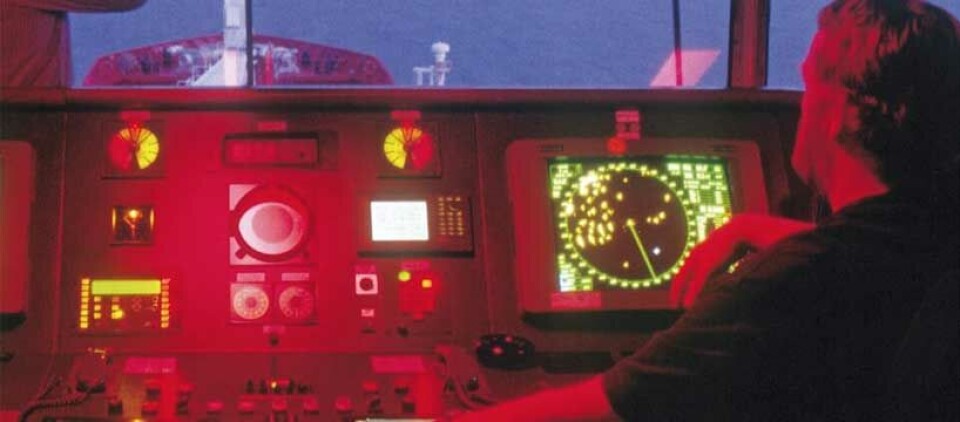
GL at SMM 2008
At SMM 2008 the whole shipping community showed its concern about Energy and Environment. This was also the case with Germanischer Lloyd’s press conference with topics such as “Energy efficiency – how to do it” and “GL Fuelsaver.”
Denne artikkelen er tre år eller eldre.
Dr. Herman J Klein spoke about the first topic with examples of the rising fuel cost and global emissions. As everybody in shipping knows, shipping should be the chosen transport mode considering emissions in relation to volume shipped, and GL showed that international shipping is only responsible for 2.7% of the global emissions, while Transport as such stands for 21.7%.
Several examples were given on fuel cost, and the total bill is of course astronomic. For a 9,000 teu container vessel GL came up with a figure of $43.8 million per year basis price of $600 per ton and consumption of 200 tons per day mulitiplied by 365 days. (Our comment: the latter is of course not correct since the vessels burns much less while in port).
How to make Shipping more environmentally friendly
Presenting the “GL FuelSaver” Mr. Pierre C Sames advised that in the last two years, shipowners have seen bunker prices increase by roughly 140%. Additionally considering upcoming environmental regulations, shipowners pay more attention to an economical and environmental friendly way of transport. The interest in reducing the fuel consumption for all kinds of vessels is high. Classification society Germanischer Lloyd has responded to this demand:
GL’s FuelSaver suite of new services includes the “CO2-Index Data Analysis” and the “Operational Fuel Consumption Analysis” which help shipowners and ship managers to understand fuel consumption patterns and to identify technical and operational measures to reduce fuel costs.
Combination of tools to reduce fuel consumption
The CO2-index Data Analysis focuses on high-level fuel consumption and transport work information. It is an entry-level analysis which identifies the main drivers of voyages with unexpected high or low fuel consumption. The analysis is split into the individual analysis of a vessels’ voyages, design index and sister vessel comparisons. Ideally, the data from the certified operational CO2-index are used.
The results of the CO2-index Data Analysis are used as input to the “Operational Fuel Consumption Analysis” together with specific ship system data. The experience of key crew members and the fleet management is integrated into the interactive analysis of actual fuel consumption and ranking of improvement measures. The resulting report summarizes practical advice on how to improve the ship’s efficiency as a function of fuel price.
Additionally, GL offers individual reviews and analyses for hull, machinery and the ship’s operation to examine in more detail identified efficiency improving measures and their cost benefits ratios.
GL launches new Containership Construction Rules
158 containerships of 10,500 TEU and larger will enter the world fleet by early 2012. In order to take particular account of technical and structural safety aspects of the growth in size, Germanischer Lloyd presented new Construction Rules for container ships at SMM.
With a revised edition of its classification rules, the classification society supports shipyards and owners in building containerships. They define a modern standard for the classification and manufacturing of containerships.
– Shipbuilders and designers have requested us to spell the calculations and requirements out. It is not only the rules, but also why they apply and how to calculate them, said Jan-Olaf Probst at Germanischer Lloyd’s press conference.
All requirements are now compiled in one concise, customer- and user-friendly document. The new edition also comes with enhanced graphics as well as updated tables and illustrations. By introducing the new classification rules, GL assists shipyards and shipowners in the challenges of building containerships: The level of detail in the new containership rules has been expanded.
Classification rules have been developed to guarantee the structural strength and integrity of essential parts of a containership’s hull and superstructure. Furthermore, these rules assure the reliability of the propulsion and steering, thereby ensuring safe operation of the ship.
The existing GL rules for containerships cover all current requirements. The previous edition described the procedures and instructions in general terms. The revised issue puts a stronger focus on details, providing more specific instructions on procedures such as cargo hold calculations. The section “Structural Fire Protection on Board Seagoing Ships” incorporates new requirements based on the Fire Test Procedure Code.
New recommendations are given for strengthening shell plates and profiles to minimize propeller-induced vibrations. Avoiding deckhouse vibrations – including those affecting the cantilever navigation bridge wings as well as the radar mast located on the compass deck – is a concern addressed by a set of new recommendations.
As for the deck area, the revised edition contains new requirements regarding the arrangement of strengthened insert plates. This also concerns openings within and close to insert plates. The requirements for breakwaters have been updated in terms of loads, sizes and dimensions for plates, stiffener and girders.
GL classification rules draw upon the expertise of leading members of the industry, such as shipbuilders and containership owners whose experts are actively involved in the technical committees of Germanischer Lloyd. The experience accumulated by Germanischer Lloyd in classifying containerships since the emergence of container shipping in the 1950’s has contributed substantially to the society’s know-how on this technologically complex ship type.










